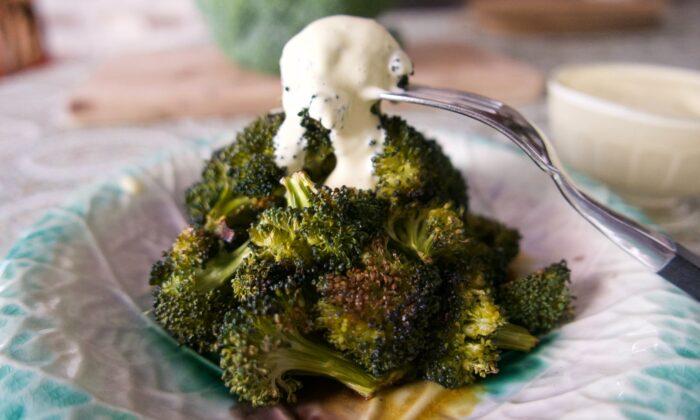One of my favorite luxuries—and one that I urge everyone to try—is keeping a small herb garden. Not much space is needed; a windowsill, a few pots in a sunny corner, or a small patch just outside the kitchen door are all enough to put fresh herbs in your hands whenever you need them.
Planting and growing herbs is very easy to do, and incredibly satisfying. All you need to do is give them sunlight and a little water; they, in return, will deliver flavor and freshness to every dish they touch.
Soft herbs, those with a soft stem such as basil, parsley, tarragon, mint, cilantro, and dill, are used mainly at the end of cooking or as a garnish to preserve their fresh, delicate flavors. Hard herbs, which have woody stems and include rosemary, sage, thyme, and oregano, are typically added near the beginning of the cooking process, to give them time to imbue the dish with their distinct flavors.
When you bring bunches of herbs home from the market, you can either wrap them in wet paper towels and store them in the fridge, changing out the paper towels when they dry out, or use them as decor in the kitchen, kept in water just like flowers. I put mine in decorative planters on a shelf and cut as needed.
At the end of the summer, when fresh herbs have taken over gardens and farm stands—and windowsill pots—it’s a wonderful time to make use of their abundance. These three recipes I am sharing can be made all year long, but during these months when summer herbs are at their peak, they will shine even brighter.
Salsa verde is one of those incredibly useful sauces that are fantastic on nearly everything, whether grilled chicken, steak, or fish; potatoes; or sautéed vegetables. I make masses of it whenever I have abundant soft herbs, and freeze it in cup-sized containers. I love using it instead of pesto on pasta and sliced tomatoes, instead of mayo to spread on sandwiches, and instead of ketchup to dip french fries. It is a sensational way to finish a bean stew, for a touch of brightness.
It also happens to be the perfect dipping sauce for my shrimp and herb fritters—though they’re just as fantastic eaten on their own. Serve them as a tapa, or as part of a multi-course lunch or dinner.
SIDEBOX: Still Too Many Herbs?
I often use herbs as centerpieces for the table; they are a perfect example of thoughtful yet effortless decor. Big bunches of parsley look like elegant mini topiaries, while small bouquets of bay leaves, rosemary, and thyme offer a lovely mix of textures, heights, and colors. Their aroma will not interfere with your food.Frying herbs is also a charming way to add color, crunch, and flavor to dishes—and to garnish dishes or decorate serving platters. Leaves of basil, parsley, and sage all fry into crisp delicacies; just be sure that they are completely dry before dropping them into hot oil. For a different take on a caprese salad, use fried basil instead of fresh. Mounds of fried parsley are a terrific accompaniment to simply steamed fish, and sage fried in brown butter makes one of the simplest and tastiest pasta sauces ever.
To store herbs to last through the winter months, try drying or freezing them. Both soft and hard herbs can be chopped and frozen in ice cube trays, either on their own or in olive oil, and then transferred to sealed plastic bags. They are perfect for adding flavor to stews, soups, and sauces.





